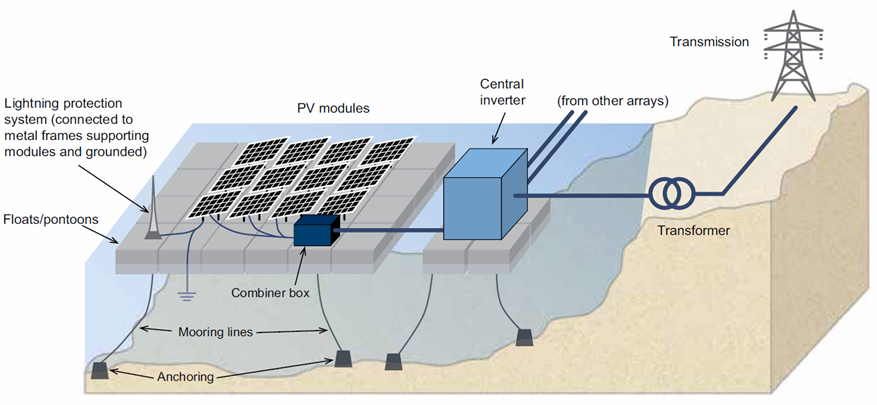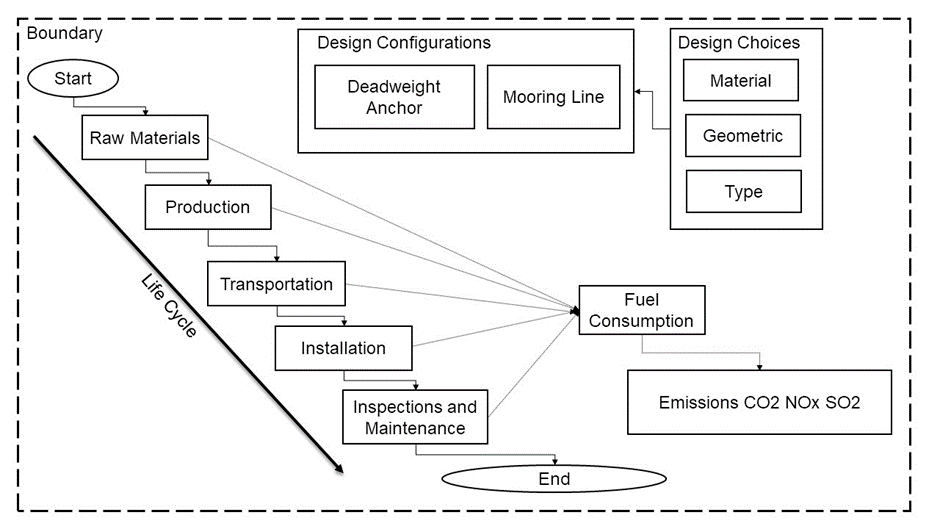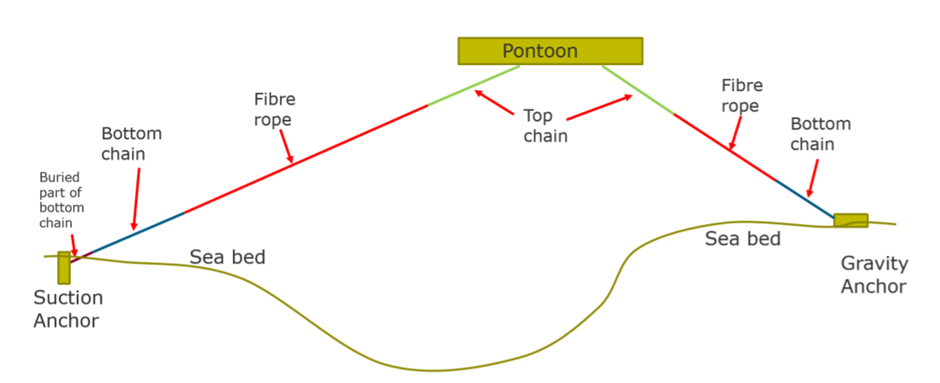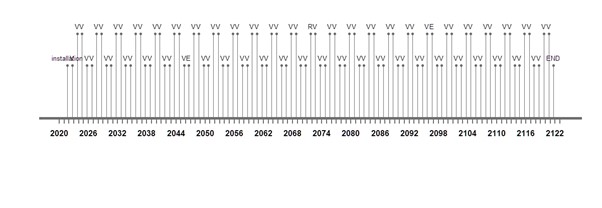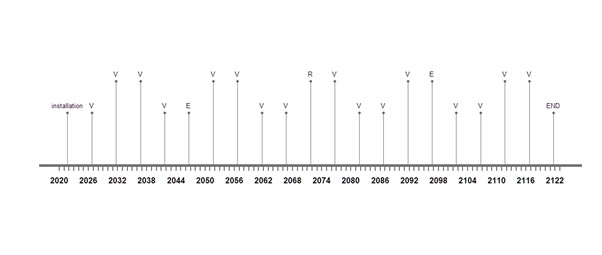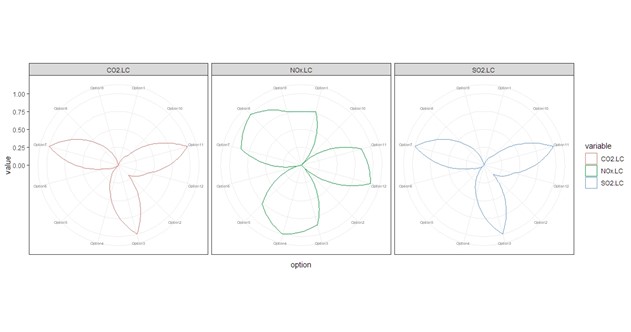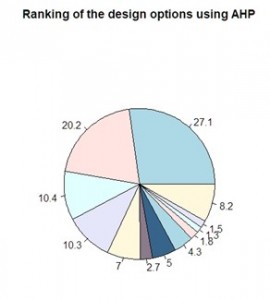Background
This systems build around the LCA of Floating Solar Photovoltaic Parks in the Maldives. These systems require difficult logistical paths to build and maintenance, and undergo severe weather conditions and solar panels are subject o many potential failures during their lifetime. Stakeholders are often motivated to choose a design solution with the cheapest up front cost, but this is why the LCA is important to consider the long term effects and benefits of different configurations, and provide a means for designers to come to a better solution under consideration of multiple criteria.
Figure 1: Schematics of Floating Solar PV System
Goal and Scope
In the first assignment, the possible failures, deteriorations and probable change of state were examined for the solar panels themselves under consideration of the climate conditions of both the tropical Maldives and for mounting PV panels over water. In the second assignment, LCA was conducted on the mooring lines and anchoring systems needed to hold the parks in place and overcome strong wind and current loads. This was a particularly interesting topic to investigate because little research has been conducted specifically to such a system.
The aim to this research is a two-pronged approach to assessing the lifecycle. First of all, the emissions of producing different types of foundations (anchors) needs to be considered based on the production, transportations and materials themselves. Once these foundations have been placed, they are essentially never removed, so their maintenance schedule is of no interest. However, the mooring lines require extensive safety inspections and possible repairs over the lifetime, so it was important to also consider different design configurations that could also be used. This information is summarized in the graphic below.
Figure 2: Scope of LCA
Design Alternatives
Figure 3: Schematics of Mooring and Anchoring System
The figure above shows the principle design concept for the mooring and anchoring system, and several design configurations were analyzed including four possible different foundations: Clump Weight Anchor, Scrap Iron, Weighted Corners and Shear Key and the mooring lines had three possible designs: Fibre Rope, Steel Rope or Chain. This gives a total of twelve possible design configurations.
Maintenance Plan
The figure below summarizes how dramatically the life span of different types of mooring lines are, and they all require different inspection and safety check strategies, which are well modelled in RStudio.
Figure 4: Overview of Life Spans of Mooring Line Design Alternatives
Figure 5: Chain Link Mooring Line
Figure 6: Steel Rope Mooring Line
Figure 7: Fibre Rope Mooring Line
Life Cycle Inventory
The four possible anchor configurations require different production means and travel over different distance for delivering to the Maldives, which all leads to different emissions outputs. The different design configurations are therefore analyzed based on their material and transportation distance to see which option produces the most CO2, SO2 and NOx.
Figure 8: Radar Mapping of Results of LCA
Decision Making Analysis
Multi-criteria Decision Analysis performed with the analytic hierarchy process is used to find the best possible solutions, with four anchors and three possible mooring lines, this gives twelve possible solutions.
Figure 9: Results of Analysis with weighted Analytic Hierarchy Process
The final interpretation of the results is that configuration 8 as seen above in aqua blue would be the best solution under consideration of both the LCA and the maintaining schedule. This design solution incorporate steel rope which do not have the longest lifespan, but do not require as much maintenance and visual inspections during the shorter lifetime. Furthermore, selected a weighted corners fundament costs the least emissions for the production and transport.
References
Davidson, J., & Ringwood, J. (2017). Mathematical Modeling of Mooring Systems for Wave Energy Converters. Kildare, Ireland: Centre for Ocean Energy Research, Maynooth Universit.
(2010). Guidlines for Mooring 0032/ND. London, United Kingdom: Noble Denton.
Ring, M., & Mendoza, E. (2021). A Design Procedure for Anchors of Floating Ocean Current Turbines on Weak Rock. Basel, Switzerland: MDPI.
Solar Energy for Tropical Islands. (2015). Retrieved from Swimsol GmbH: https://www.irena.org/-/media/Files/IRENA/Agency/Events/2015/Sep/17/3FloatingsolarPVinvestmentcaseSwimsol151110.pdf?la=en&hash=0720DCD927AA3B5C6C3F8853A851DD98B26FEFDD
Wåsjø, K., & Böllmann, T. (2019). Design of Mooring and Anchoring for Concept Development Floating Bridge E39. BJØRNAFJORDEN, NORWAY: Norconsult.
(2019). Where Sun Meets Water. Washington DC, Unites States of America: 2019 International Bank for Reconstruction and Development.
Other systems:
Integration Context of the civil systems
Integrated Maintenance Planning
